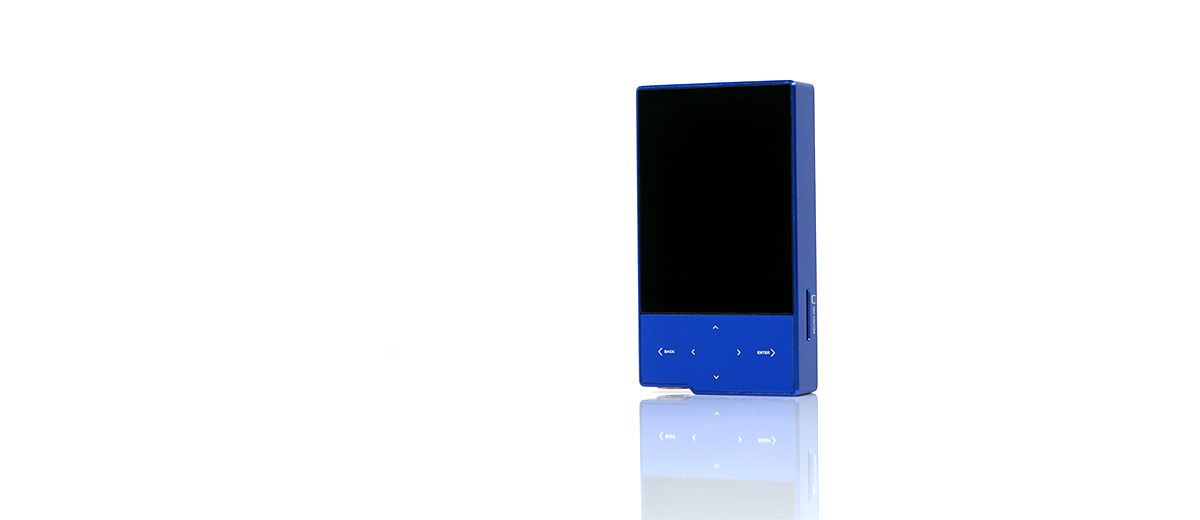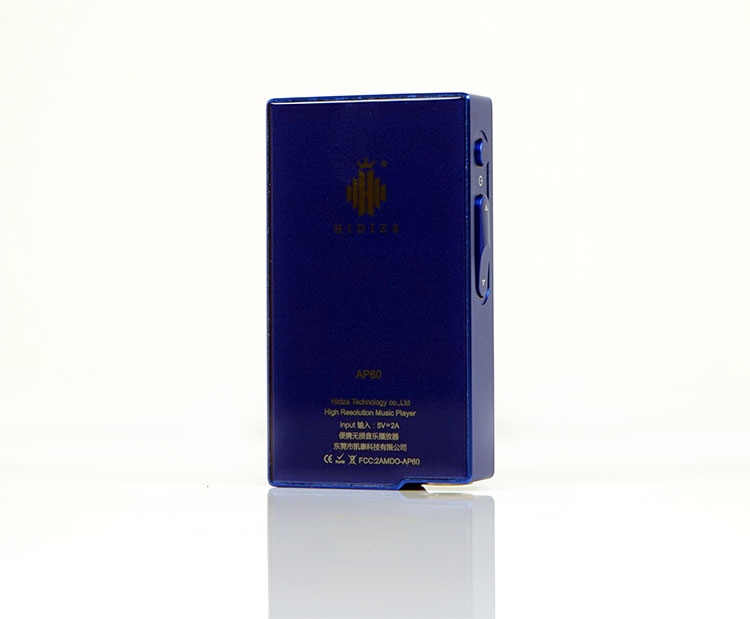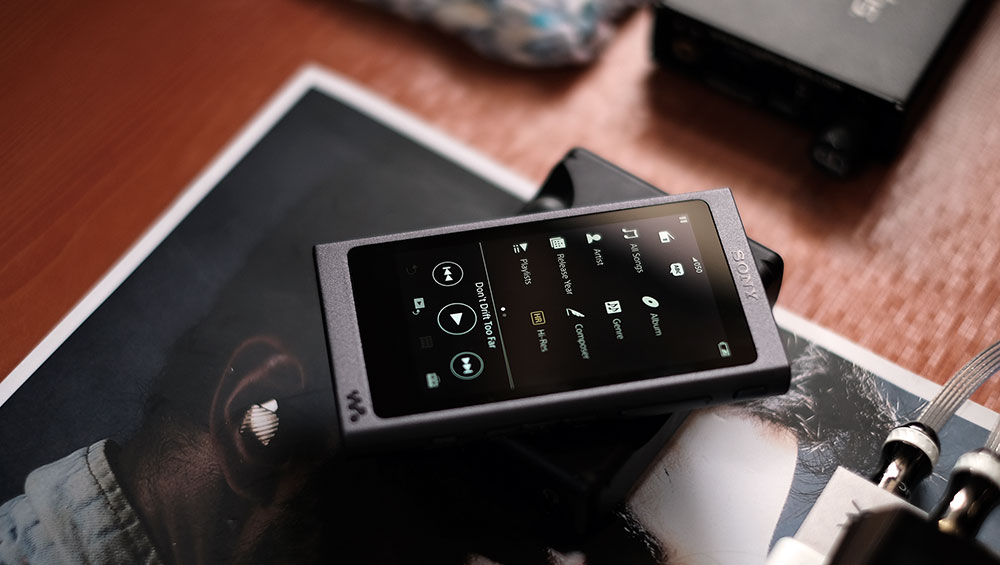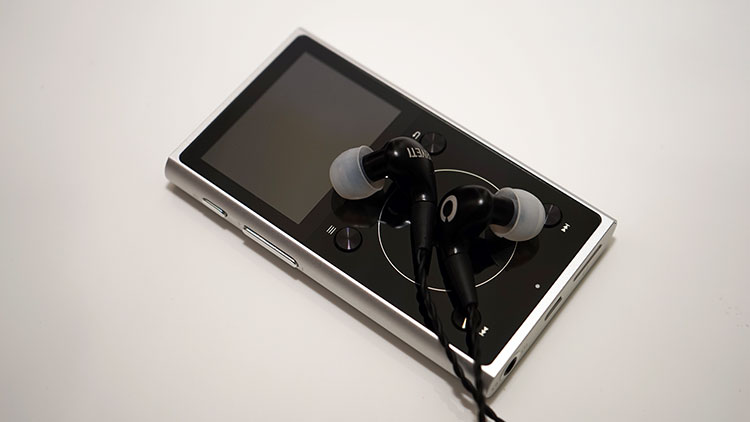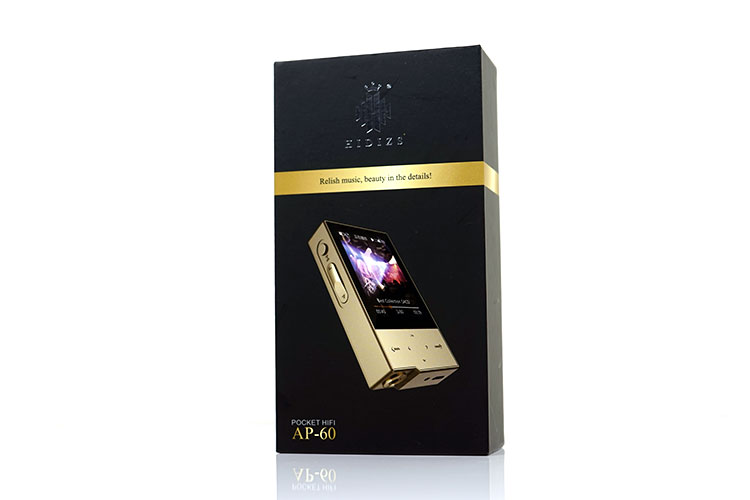Sound Impressions
Tonality & Presentation
This is fascinating. It is the same DAC chip and amp stage but the tuning is quite different now to the original AP60. Previously, I described the AP60 is quite warm, full-bodied with a low to lower mid-range bias and a relaxed top end that sounded a bit veiled. The resolution was also so-so.
This time around the AP60 II is more balanced sounding with a cooler more natural tonality though still north of neutral in terms of low-end weight. Still, it sounds much more accurate to my ears without losing that sense of musicality I come to expect from AK infused chip-sets.
It still not quite as resolving as something like the N3 but the micro-detail is easier to pick out than before. That cleaner sound and better treble performance make this a more enjoyable presentation than the original AP60.
Staging has also improved markedly over the original AP60. With the low-end pulled in slightly and better emphasis on vocal presence and treble energy, you get better height and width as well as superior instrumental positioning.
Bass
This is quite different to the first gen AP60. I would still class it as north of neutral and a bit soft but a lot of that bloat has been stripped out and it sounds so much the better for it. You are talking a more natural level of warmth now, less elevation, and consequently a more accurate upper bass and lower midrange instrumental timbre.
With a lot of that bloom taken out you can also appreciate the sub-bass response a bit better even if it still remains on the polite side. It still feels it has that slight roll off but its less obvious now with the mid-bass performance not as heightened.
Mids
Mids have been tweaked for the better also. With the bass response pulled in a bit more the lower mids have a better clarity and composure. Timbre is natural sounding with a reasonable level of warmth and decent but not amazing texture. I much prefer the harmonic balance on the AP60 II compared to previous gen. It sounds much less rounded and smoothed over this time around with better bite and most importantly more headroom.
Hidizs have also pushed forward the vocal presence on the AP60 II, much more so than the AP60 first gen. As a result midrange instrumental positioning is a little behind vocals which is perfectly fine for a vocal lover like me.
It means there is a slightly more intimate presentation than the likes of the Cayin N3 and X1 2nd Gen whose vocal positioning is a touch more neutral sounding but it is much better sounding than the veiled AP60 first gen vocal performance.
Treble
The AP60 II treble has more energy this time around, particularly the lower treble signature which delivers much better contrast with its bass response than the AP60 first gen.
The more forward signature is more in line with the N3 tonal bias with improved clarity and a lively, but welcome percussion timbre. The difference now is more in terms of refinement with the AP60 II just sounding a little glassier than the N3’s lower treble.
Upper treble falls away a bit on the AP60 II but not hugely so. It is not a dark signature by any means, but maybe sacrificing a little air in favor of that upper mids and lower treble focus.
Matchability
Efficiency
The AP60 II delivers the same level of efficiency and power as the first gen AP60 and should be an ideal matchup with IEMs given it is a not very powerful 35w into a 32-ohm rating.
However, in reality, the noise floor is a touch too high for super sensitive IEMs, particularly BA designs hitting low ohm ratings and higher sensitivity ratings of around 115dB upwards. IEMs such as the Campfire Audio BA range including the Orion and Andromeda were simply exhibiting way too much hiss even on low gain level to be considered an ideal match. Comparing the N3 with the AP60 II on low gain I can tell from the volume level matching Hidizs have upped the gain levels of the AP60 II more than Cayin.
However, for IEMs with a lower level of sensitivity, dynamic driver based or hybrids IEMs such as the SIMGOT EN700 Pro and the FiiO F9 the AP60 II is a better match. These type of IEMs, with around 100dB to 110dB, are much quieter and do not pick up on any significant hiss.
Synergy
As before with efficient portable headphones are a perfectly ok match with the AP60 II such as the Meze 99 Neo and the Sony MA900 though by no means a highly resolving partnership.
Personally, I feel the AP60 II excels more on medium efficiency IEMs which tend to do well with higher noise floors but do not need a huge amount of voltage. The higher impedance headphones, say over 32Ω really need more power than the AP60 II is capable off. You will get reasonable levels of loudness and volume but the dynamic range gets a little compressed and the stage is too shallow.
OTG
This still remains one of the best features of the AP60 series. Given its tiny size and better IPS screen, it is now just perfect to stack on top of a good DAC/Amp such as the Mojo. Just simply plug in, wait for the pop-up “audio device connected” message on the AP60 II and then hit play.
The tiny form factor makes it an ideal stacking partner for the likes of the Chord Mojo and the RHA L1 which will not only offer a higher level of detail but lower the noise floor and bring in higher powered headphones into the equation.
I will say though that not all DAC/Amps will have equal performance levels. The Mojo’s voltage level control and level of clarity were much superior to the RAH Dacamp L1 which seems to run too quiet even in high gain mode with a reasonable set of 32-ohm headphones.
Select Comparisons
Sony NW-A35
$150 – 219 street price
Technical
As an example of engineering capability, the A35 is just gorgeous. I never actually reviewed a unit officially though I have one in the collection for the last few years. It is technically bigger than the AP60 II and weighs a few grams more.
However, the Sony is much more slimline, with about half the depth and sports a larger 3.1″ 800×480 (WVGA) TFT touch screen with additional playback control physical buttons on the right-side panel. Battery life on the A35 is an astonishing 20 hours minimum for DSD up to over 45 hours for lossy files such as MP3. It also has 16GB of onboard memory.
Cables
The only thing I get weary off when using the Sony is the proprietary 22-pin connector for data transfer, charging and OTG. It is an additional and unnecessary cost to have to buy conversion cables for OTG whereas the AP60 II runs happily off any micro-USB cable.
BT
Both have BT though Sony opts for its own LDAC codec compared to the aptX of the AP60 II. Both are pretty good though LDAC maybe baked into Android 8.0 as standard which might open things up for Sony. Though it does not have the likes of HiBy link it does support a measure of bi-directional support such as remote control services.
Noise
Sony uses a digital amp as opposed to the analog design of the AP60 II. Though both have similar power ratings, the Sony is able to achieve a much blacker background and very low noise levels due to the digital amp design. The silence of the AP60 II only kicks in with the mute relay.
Sound
The A35 has a fairly balanced and natural sound with quite a pleasing instrumental timbre. The A60 II has more bass weight than the A35 and a far more forward sounding vocal delivery making it a more aggressive and intimate presentation.
The A35 tows a more neutral line with a better balance between bass and vocal response allowing for more lower mid-range instrumental presence. Resolution on the Sony is a little more nuanced in its delivery compared to the more musical in your face approach of the AP60 II.
Treble on the Sony is a little smoother, perhaps a little more natural sounding though doesn’t have the same level of energy as the AP60 II. Both have similar levels of headroom.
Personally, I find myself veering to the AP60 II a little more for EDM or anything just fun and bass heavy. However, if I want something a bit more balanced and nuanced in its delivery I would pick the Sony, particularly for hi-res acoustics that requires a black background to shine.
FiiO X1 2nd Gen
$99.99
Technical
The Ingenics SOC on the AP60 II is still better and the Linux OS on the X1 2nd gen still weighs it down. The AP60 II is faster, less buggy and with the addition of the physical buttons equally as easy to use as the X1 2nd Gen system.
The AP60 II feature set now includes Bi-directional BT and aptX combined with HiBy Link. This is a setup on the X1 2nd Gen which does not have aptX. Hidizs continue to benefit from the commitment of HiBy Music to this SOC.
Both have 2-inch screens but the new IPS screen of the AP60 II is a bump up now over the X1 TFT version. Combined with the strange aliasing of the X1 Font I find the AP60 screen to be far more legible.
Power & Noise
The X1 has a rated ≥ 70 mW (@32 Ω) compared to the AP60 II’s 35mW@32 ohm. In short, the output power is roughly double that of the AP60 II. It also has a lower noise floor than the AP60 II with sensitive IEMs though both DAPs have a higher noise floor than the Cayin N3. That was a missed opportunity from Hidizs to really nail the AP60 II as the entry level player of choice without using OTG.
Sound
The fresh tuning of the AP60 II now has more in common with the X1 2nd Gen than they are different. Both have a fairly balanced signature with a bit of warmth in the bass response but nothing overly drastic.
Staging wise the X1 2nd gen has a tiny bit more width and superior lower mid-range instrumental presence. The AP60 II has slightly less low mid-range presence but a more forward upper mids and lower treble signature.
Vocal presence on both is slightly forward with the AP60 II the marginally more forward of the two. The AP60 II treble has slightly more energy and sounds marginally further forward. It is also the slightly thinner and more brittle sounding of the two but its a very nuanced difference.
Cayin N3
$149
Specs
The AP60 II packs the same Ingenics X1000 SOC processor as the N3. It also uses the same custom designed SOC software as the N3. The theme and aesthetics of the OS might be different but the workflow and options are much the same on both DAPs. This means the AP60 II is equally speedy and stable as the N3.
Decoding
Like the N3, the AP60 II also supports duplex BT with bi-directional transmission as well as offering BT 4.0 aptX out and receive aptX 4.0 in. The AK4452vn DAC chip is also an AKM chip though slightly lower in the chip family than the AK4490EN with a maximum decoding output rate of 24BIT/192K set by Hidizs. Note, the introduction of HiBy Link also brings the AP60 II fully up to par with the N3 in terms of core OS features.
The AP60 II and N3 both have USB-DAC/OTG functionality and can accommodate a single microSD card. Neither of them has onboard memory. Battery performance on both the N3 and AP60 II is similar at 10-12 hours though the AP60 II has a much smaller 1000mAh battery in its tiny body
Power & Noise
The AP60 II’s Achilles’s heel compared to the N3 continues to be its output power and noise levels. Hidizs have rated the AP60 at 35mW@32 ohm which means it’s got about 1/4 of the output power at 32 ohms loaded compared to the N3.
The N3 plays quieter with better gain levels than the AP60 II. Something tells me the superior amp on the N3 does not have to be pushed as hard as the AP60 II giving Cayin more room to introduce lower noise floors and lower gain settings.
Sound
The AP60 II now comes a lot closer to the performance level of the N3. The tonal bias is much the same, a firm emphasis on musicality with an aggressive low-end and forward vocal presence and a lower treble presence that is not too harsh. There are a few differences between these two players though on the micro-level.
First, is the noise level. As mentioned the N3 has a much blacker background and better gain levels. The AP60 II is far noisier. Second, the low-end of the N3 has a bit more sub-bass presence and the marginally more planted of the two with better texture. Third, the entire mid to upper mid-range and lower treble of the AP60 II is further forward than the N3 making it sound a little brighter and more aggressive but also slightly harsher.
My choice is the N3 with sensitive IEMs and much like the Sony, I would also grab it for something a bit more nuanced and sparse sounding. You need that black background and the N3 delivers on that. The AP60 II though is much more aggressive and “jolly sounding”. If you enjoy a forward vocal performance and a more intimate but aggressive sound then its a decent choice at this price point.
Our Verdict
Whilst I still rate the AP60 II has probably the most feature-laden transport device in its price class I am mightily impressed with the improvements over the first-gen.
Particularly on the new tuning. It is much more balanced and in line with how I expect an AK infused device to sound like. It is still musical and aggressive with a forward vocal and lower treble but nowhere near as warm and woolly as before. It does not sound a million miles away from the Cayin N3 and that is a good thing as I rate the N3 as a best in class budget player.
The rest of the physical improvements such as the CNC aluminum body and IPS screen really do add a nice shine over the plastic first gen player. The new OS features such as HiBy Link bring it up to par with many of the features in other competing HiBy infused devices.
It still has the noise problem though with sensitive IEMs. I do hope a future firmware can really lower the gain level to stop the background noise. It can be too distracting unless you are using more inefficient dynamic driver IEMs or hybrids.
This is a nice little starter DAP now. True, the $119 SRP is a bit higher than the old $90 street price of the AP60 first gen. You could justify that with the better finish and screen but I have a feeling the price might drop as they always do in time. Those frustrated with the FiiO X1 2nd Gen performance might find this actually a worthy alternative.
AP60 II Specifications
- Size 75mmX42mmX14mm
- Material One-piece CNC aluminum alloy body
- Color Gold, Gray, Black, Silver Blue
- Screen 2.0inch TFT HD screen (320X240)
- DSD64/128
- USB/OTG DAC
- Bluetooth 4.0 and Aptx lossless
- CPU X1000
- D/A chip AK4452VN
- AMP chip MAX97220A
- Gain Setting Low gain, high gain
- Sampling rate 44.1kHz-192kHz/24bit
- Support format FLAC、APE、WMA、WAV、ALAC、AAC、OGG、MP3、AIFF、DSF、DIFF
- Output 3.5MM headphone jack
- Output power 35mW@32 ohm
- Output impedance 0.1 ohm
- Frequency response 20Hz~20000Hz(-0.5dB)
- THD+N 0.005%
- SNR > 109dB
- Dynamic Range > 105dB
- Channel Separation 106dB
- Extended Storage Up to 256G
- Power supply Micro USB2.0
- Battery 1000mAH Lithium polymer battery
- Battery life About 10〜12 hours
- Support system MAC OSX10.7, Windows, Windows 7/8/10

